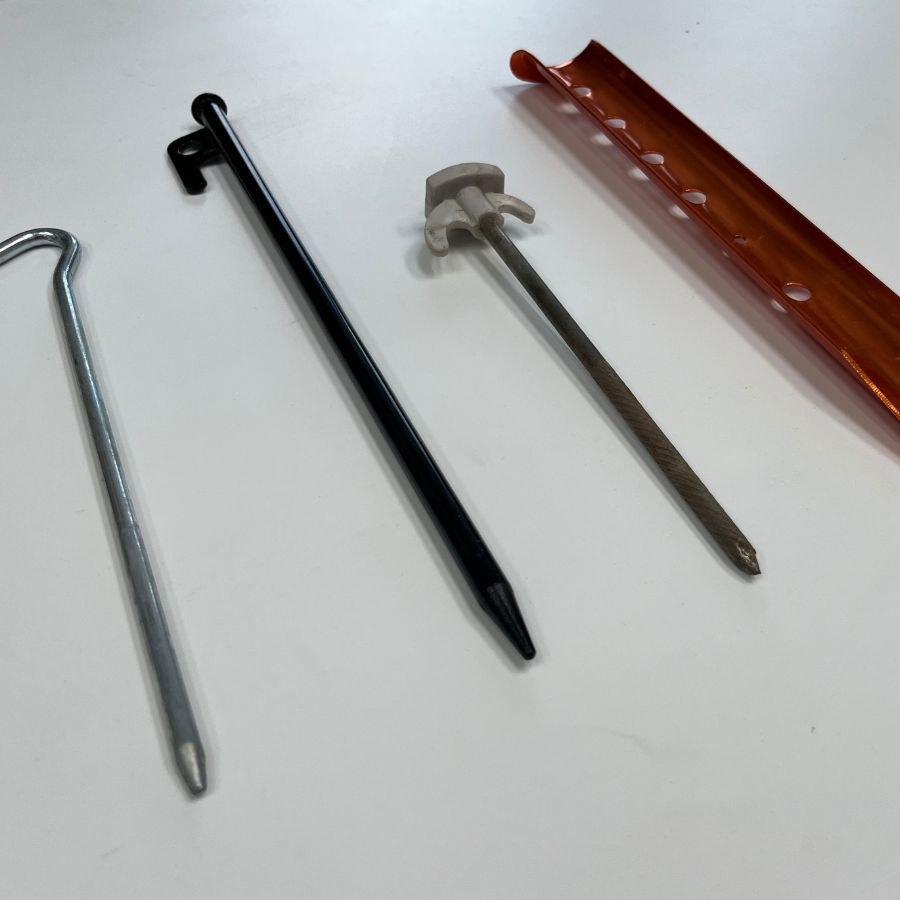Hold Your Ground: The Peg Stops Here! A guide to picking the right pegs for your pitch.

Ah, the humble tent peg. Often overlooked. Rarely appreciated. Until you’re wrestling with gale-force winds on a boggy campsite and your awning suddenly starts impersonating a kite.
Most of us treat tent pegs like disposable cutlery — grab what comes in the bag, bang them in wherever, and hope for the best. But here’s the truth: not all tent pegs are created equal. And if you want your glawning or bell tent standing proud through sun, rain, mud or feels-like-concrete, it pays to know your pegs.
Standard vs Heavy-Duty: Know Your Peg Role
Let’s start with the classic jack-of-all-grounds peg. These are your general-purpose pegs — the kind most people are familiar with, and the ones that come as standard with most bell tents and every Glawning. But here’s the important bit: not all “standard” pegs are the same. There are actually two types we include — and they serve different purposes.
The smaller, lighter pegs are ideal for pegging out your groundsheet, footprint, or draught skirt. They’re quick and easy to use, and perfect for jobs that don’t need to handle much tension.

Then there are the heavy-duty stakes/rebar pegs in black or silver — longer, tougher, and built to take the strain. These are the ones you want for guy lines and structural support, especially when the weather turns. They’re designed to hold firm and keep your canvas castle standing tall. 
So before you start hammering away, take a moment to match the right peg to the right job — your Glawning or bell tent will thank you for it. Pin pegs round the base through the D-Rings, heavy duty stakes for the ends of the guy ropes.
Hard Ground Pegs: The Big Guns
Heading to a gravel pitch or rock-hard festival field? Standard pegs will bounce off the surface like you’re trying to stake out concrete. You’ll need hard ground pegs — think long, thick nails with attitude. Usually made of steel, these beasts go in with a satisfying clunk and hold fast where others fail. Something like this will see you right: (Top tip: bring a decent mallet, not the back of your Crocs)
Soft Ground Pegs: Mud Masters and Sand Specialists
Adventurous enough to be camping on a beach? Or after a week of British summer rain? Flat, curved pegs are your friend. These wide-surface pegs are designed to stay put in soft mud or sand, spreading the load and resisting that frustrating ‘pop out’ moment when the wind picks up. They look a bit like they belong on a spaceship, but they’re worth their weight in gold when the ground gets mushy.

Peg Placement: It’s All About the Angle
Even the best peg in the world is only as good as how it’s put in. Here’s the golden rule: 45 degrees, pointing away from your bell tent or glawning. Not straight down. Not wonkily hammered in with a wine bottle. The guy rope pulls upward and sideways, so that angle gives maximum resistance and keeps your canvas palace steady. It’s basic physics — but also basic common sense that’s often forgotten in the excitement of arriving on site.
Another golden rule for pro pitching: make sure your guy ropes run out in line with the seams on your tent.
So there you have it — peg smart, pitch strong, and stay grounded.
Because in the world of glamping, it’s not just about looking good… it’s about still having a tent to look at.




Leave a comment